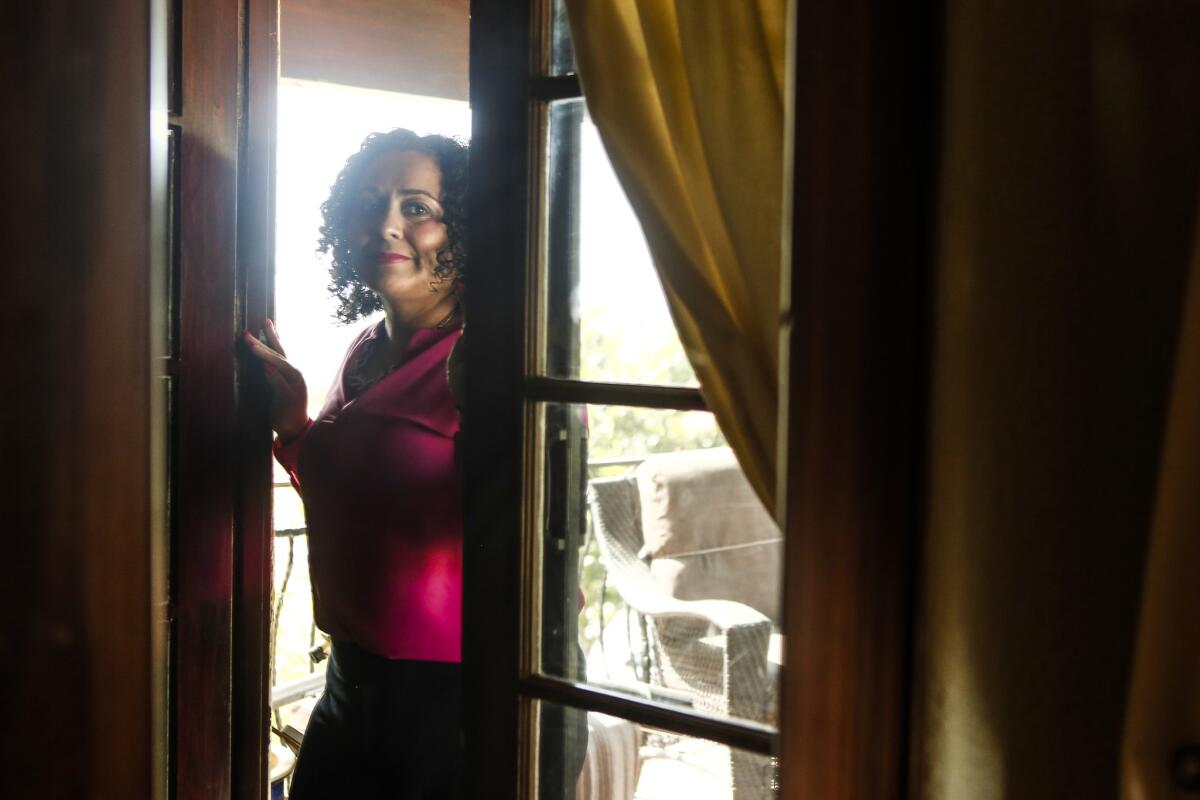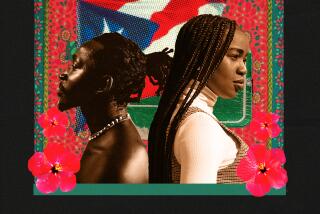Must Reads: In the Trump era, a lighter shade of Latino can make life easier

Over her 42 years, Lisette Flores’ brown skin has at times struck at a rich vein of insecurity.
In the more mundane moments, she’s been quizzed about her background, whether she’s Mexican or Native American. In college, the young woman taking her ID photo offered to lighten the shade in the background to make her look less dark.
In Mexico, a bouncer at a nightclub looked down at her and asked if the others in her group looked like her — far from the blond, light-skinned women often featured in the country’s popular telenovelas.
In January, her darker skin made her a target of a more politically fashionable attack.
As Flores walked back from lunch, she encountered a group of Trump supporters protesting outside the Arizona state Capitol building in Phoenix.
“Go back to Mexico!” a woman shouted, singling Flores out of a group of six. Two light-skinned Latinas escaped the stinging words.
Colorism — a subset of racism that rewards light skin and more Anglo features and penalizes dark skin and more indigenous features — long has affected how people are perceived in this country. But it has contributed an extra layer of angst in the Trump era, as the rhetoric around immigration draws attention to those whom some people, with seemingly more audacity than before, judge as not belonging.
“I’ve never committed a crime, I try to be a good neighbor, a good friend, a good person,” Flores said. “And to know that any contribution, however big or small I’ve done, is seen as irrelevant in certain eyes because I’m not blond-haired, or blue-eyed or light skin-colored, that all I’m seen as is somebody that … they consider as an invader, as an alien, as a criminal, is disheartening.”
The day after President Trump’s election in 2016 — according to Documenting Hate, a project that tracks bias incidents around the country — a student reportedly told a seventh-grade girl in Clarksburg, W.Va., “You’re going back to Mexico now.” The girl’s father is Native American and she is not of Mexican descent. Her skin is darker, the report noted.
Later that month, a woman reported that she was in line at a grocery store in Austin, Texas, when an older man picked up a newspaper with a picture of a Latino man.
“Trump is going to get rid of you people,” she said he exclaimed before shaking the paper at her. The woman was white, but had darker skin.
For many Latinos, the Trump era has hammered home the privilege, or lack thereof, that comes from being the light-skinned güero or dark-skinned prieto of the family.
On social media, some Latinos have called on others whose appearance makes them closer to “whiteness” to acknowledge their privilege and support Afro Latinos and indigenous Latinos.
“People who can pass [as white] are less likely to be called names on the street or at sporting events and that kind of thing, which can make it easier to turn a blind eye to or to minimize when you’re not facing it as directly,” said Margaret Hunter, a sociology professor at Mills College in Oakland. “Some of the fissures in status by skin tone are getting amplified in this context of heightened racism and xenophobia.”

Celia Lacayo was known in her family as “negrita,” little black girl. For her godparents, her mother and father picked her darker-skinned aunt and uncle.
“The three of us were the outcasts in the family, so to speak. We were called these words, and oftentimes they would say, ‘Oh, it’s just out of love.’ But it really didn’t feel that way,” Lacayo said. “You see the preferences — the preference for the lighter-skinned child, the child who has straight hair, the child who has light eyes. Anything more Anglo or European.”
In addition to praise within families, being a light-skinned minority also translates to material benefits, including a higher income and greater educational attainment, data show. Latinos and black people deemed to have lighter skin tones are significantly more likely to be seen as intelligent by white interviewers than their dark-skinned counterparts, according to a 2015 study published in the journal Social Currents.
The colonization of the Americas and spread of slavery played a large role in the denigration of dark skin and indigenous features, Hunter said.
Skin color and language are stereotypical factors that many people use to judge someone’s Americanness. In the same way that some Indian Sikhs have been attacked for wearing turbans, darker-skinned Latinos can become targets simply because they fit some stereotype of what a Mexican looks like.
“When you’re in an era of Euro and white nationalism, color or skin tone can often be a proxy for a variety of distinctions,” said Brian Levin, director of the Center for the Study of Hate and Extremism at Cal State San Bernardino. “Oftentimes, darker complexion is exploited as visual proof of a parasitic invasion of the country, that is not just evidence of changing demographics, but a proxy for a sinister attack on our values, culture, economy and safety by outsiders.”

Growing up, Gloria Calderón Kellett recognized that she and her brother, both Cuban American, were bound to have different experiences because her skin is light and his is dark.
“We would go out places together and he would be treated so differently than me,” Calderón Kellett, a TV writer and producer, said. “He walked around the world differently than I did.”
Last year, as her brother walked with his two children on a San Diego beach, someone told him to go back to Mexico.
“He was just so stunned,” Calderón Kellett said. “We’ve never experienced that in San Diego.”
Calderón Kellett decided to reference the incident in her Netflix show “One Day at a Time,” which focuses on a Cuban American family living in Los Angeles.
In the first episode of the second season, the character played by actor Marcel Ruiz is told to “go back to Mexico” after he is overheard speaking Spanish with a friend. He tells his mother that, in another incident, the opposing baseball team saw him and yelled, “Build the wall!”
“Ever since somebody decided to call an entire group of Latinos rapists and criminals, everyone thinks they can say whatever racist thought occurs to them,” his sister, played by Isabella Gomez, says in the episode.
“It’s amazing how lucky I’ve been,” she adds. “Even these days in this openly racist world, I’ve managed to never have an incident.”
“You and your brother are of different shades,” her mother, portrayed by Justina Machado, says.
Aneliza Ruiz, who was raised in East L.A. and is second-generation Mexican American, has hazel eyes and light skin. Growing up, the 21-year-old felt she “represented this sort of assimilation dream.”
“I think it’s rooted in wanting to be successful in the U.S., and that means being white and wanting to attain some sort of easier life through this inherited privilege, and I think that’s really screwed up,” Ruiz said. “I think this conversation is important to have ... especially right now in moments when it is tempting to separate yourself from a community that is marginalized, that is racialized as different. It’s important to center and support those who are at most risk.”
When Gisela Meza Salinas, 22, received compliments when she was younger, they were often tied to her skin color. Meza Salinas’ father was born in Puerto Rico and her mother in Mexico. Whenever she visited Mexico, her grandmother’s friends would comment on her light skin.
“She’s so pretty, she’s so white, she’s so pale,” they said.
“It’s really uncomfortable, but I can’t imagine my discomfort compared to my cousins who are darker-skinned,” Meza Salinas said. “My discomfort is because I’m hyper-aware of the benefit I’m receiving. I can’t imagine being on the other side of the spectrum.”
Meza Salinas has heard of recent racist incidents, but she has not personally experienced any. And that, she believes, has to do with the most superficial of all things: the color of her skin.
“They have to know I’m Hispanic to target me, and because I’m white passing, I’m pretty much in a bulletproof vest.”
Twitter: @brittny_mejia
More to Read
Sign up for Essential California
The most important California stories and recommendations in your inbox every morning.
You may occasionally receive promotional content from the Los Angeles Times.











